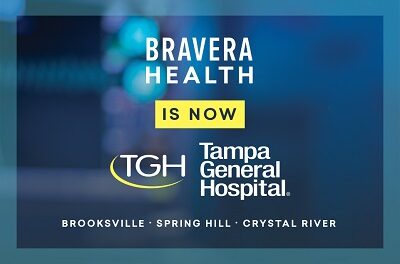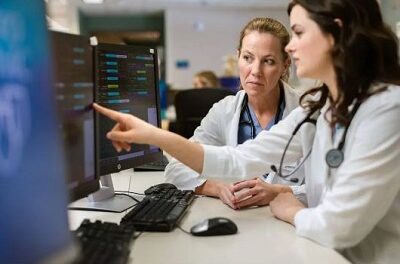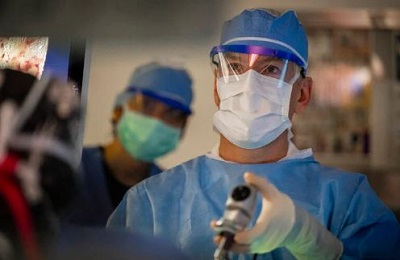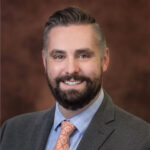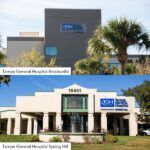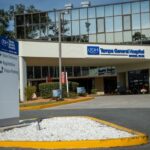October 14, 2022 – Sylvester Comprehensive Cancer Center at the University of Miami Miller School of Medicine recently brought together cancer survivors from 15 to 39 years old at the Adolescent and Young Adult (AYA) Cancer Summit in Hollywood Beach, FL.

“This was an opportunity for patients to get together, network among themselves, support each other, and share experiences,” said Julio C. Barredo, M.D., director of children’s cancer programs at Sylvester and professor of pediatrics, medicine, biochemistry, and molecular biology at the Miller School.
“This particular group of patients has different needs from most other cancer patients,” Dr. Barredo said. For example, the younger group must not only deal with cancer treatment, but also with family, school, and other relationships. For people in their 20s and 30s, financial issues are important because patients may or may not have assistance from their families or may lack health insurance. Being able to start families of their own after treatment is also a concern.
“Therapy takes time, and employers may not want to allow patients the time they need,” Dr. Barredo said. Whatever the patient’s age, “It’s difficult for them to manage what they are going through. It’s a constant struggle — undergoing treatment and managing the rest of their lives.”

Sylvester is “uniquely positioned as an NCI-designated cancer center to treat patients through the different stages of their lives, from the first day of life to the last day of life,” Dr. Barredo said.
Held on Oct. 8 at the Margaritaville Beach Resort, the one-day event was the third AYA Cancer Summit sponsored by Sylvester for patients and family members. The first Sylvester AYA event was in 2019.
Preserving Fertility for Cancer Patients
Two experts on oncofertility — which helps preserve future fertility among cancer patients who want to start families — spoke to AYA participants. Radiation, chemotherapy, surgery, and some tumors can affect fertility in males and females.
For males, “Cancer treatments, including radiation and chemotherapy, can permanently affect a man’s sperm production, and for some, lead to a complete loss of sperm production,” said Thomas A. Masterson III, M.D., assistant professor of urology at the Miller School’s Desai Sethi Urology Institute. Dr. Masterson consults on sperm preservation with men and boys who have testis cancer, lymphoma, leukemia, and other malignancies. He noted that males still producing sperm and who are unable to participate in a preservation program, or are not offered the option, can suffer damage to sperm lasting up to two years after treatment.
“Fortunately, in post-pubertal males, obtaining a semen sample is relatively non-invasive,” Dr. Masterson said. “And for those who cannot providing a sample, surgical procedures may be necessary.”
Most important: “Frozen sperm is useable for decades after collection,” he said.
Fertility Among Women with Cancer
Pasquale Patrizio, M.D., chief of the Division of Reproductive Endocrinology and Infertility and professor of obstetrics, gynecology, and reproductive sciences at the Miller School, spoke about options for preserving future fertility among women with cancer. “When young women of reproductive age are diagnosed with cancer, it is important to have a consultation with a reproductive specialist before starting chemotherapy or radiotherapy, since these treatments may cause irreversible infertility,” Dr. Patrizio said.
In the age group of 14-26, the most common types of cancer affecting women are lymphomas, leukemias, and sarcomas. For women 30-40, breast cancer is the most common.
“For young female patients, the main treatment offered for fertility preservation is egg freezing,” Dr. Patrizio said. “It requires two weeks, and generally oncologists approve waiting two weeks before starting chemo or radiotherapy treatments.”
But since health insurance does not cover egg freezing, many patients cannot afford it. “In these instances, we offer another option called medical hormonal suppression, consisting of taking a medication that suppresses the menstrual cycle during chemotherapy. This option, however, is less effective than protecting future fertility with egg freezing,” he said.
Egg freezing technology has dramatically improved in recent years, and women also have other options, such as ovarian tissue freezing. It is very important that women and oncologists today are more informed about the need to discuss fertility preservation options before staring chemo or radiotherapy.
While the incidence of fertility-threatening cancers for women has remained the same over the years, “What is improving is the survival rate,” Dr. Patrizio said.
“Today, thanks to improvements in cancer treatments, more young patients are surviving cancer. Therefore, if their fertility does not recover after treatment, they can still become parents if they were able to utilize any of the options to cryopreserve eggs or embryos.”

Sylvester Social Workers Offer Essential Support
Sylvester social workers, who made several summit presentations, play a major role in assisting and supporting all cancer patients starting with their diagnosis, said Lisa Marie Merheb, M.S.W., LCSW, director of social services at Sylvester.
“This summit was geared to support our adolescent and young adult cancer patients,” Merheb said. “This age group has a unique set of challenges. Many expressed how isolating it is for them while undergoing cancer treatment, and many said to me, ‘This is just what I needed.’ Patients connected with each other, and continued to connect and share their stories even after the summit was over.
“This was so important for them,” Merheb said. “They felt heard, acknowledged, and cared for.”
A Young Survivor of Leukemia
One cancer survivor who attended the summit is Zaheeda Hosein, M.D., a physician who was diagnosed with acute myeloid leukemia (AML) in December 2021, when she was 29.
“The summit was very well organized, and I liked the fact that they had other survivors who shared their stories,” Dr. Hosein said. “It was valuable to hear their stories. And I learned that there is a mentorship program — a kind of buddy system — for survivors.”
In early December of last year, Dr. Hosein was working as a radiology resident and a member of the COVID rapid response team at the Eric Williams Medical Science Complex in Trinidad when she was diagnosed with AML. After initial treatment in Trinidad, Dr. Hosein traveled to Miami in mid-January 2022 and began treatment at Sylvester at the end of the month. She received chemotherapy for AML, but her condition was complicated by an invasive fungal infection to her sinuses and brain.
Despite the fungal infection, Dr. Hosein made progress. After several months of treatment, AML remission was achieved in late July 2022, and confirmed by a bone marrow biopsy in September 2022.
Dr. Hosein continues with maintenance chemotherapy, plus follow-up labs and visits to her team of physicians. “The doctors say my outcome is a miracle,” Dr. Hosein said.
“I’m doing well, and the adjustment back to [normal] life has not been difficult. But I am taking it slowly and giving myself time to heal,” she said. “It can be traumatizing at times going through treatment, but my positive mindset and support from family and friends really helped me achieve the positive outcome.
“The team of doctors I had at Sylvester has really contributed to my outcome. I trusted them completely, knowing I was in the best treatment center.”





